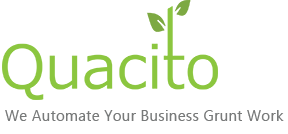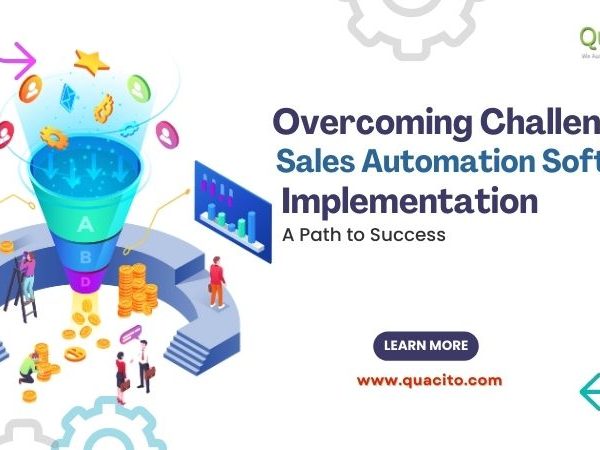
In today’s rapidly evolving business landscape, the role of technology in sales operations has become increasingly critical. With customer expectations soaring and competition fiercer than ever, businesses must embrace innovative solutions to stay ahead. Sales Automation Software emerges as a powerful tool in this endeavor, offering a plethora of features designed to streamline processes, boost productivity, and drive revenue growth. However, implementing Sales Automation Software effectively requires careful planning, strategic alignment, and continuous optimization to realize its full potential and maximize return on investment (ROI).
Set Clear Objectives:
Before embarking on the journey of implementing Sales Automation Software, it’s essential to establish clear objectives. What specific challenges are you aiming to address? Are you looking to increase lead generation, improve conversion rates, or enhance customer retention? Defining your goals upfront will not only guide your software selection process but also provide a benchmark for evaluating its success down the line.
Choose the Right Software:
With a myriad of options available in the market, selecting the right Sales Automation Software can be overwhelming. It’s crucial to conduct thorough research and evaluate potential solutions based on your business requirements. Consider factors such as scalability, integration capabilities, ease of use, and customer support. Look for a software provider that aligns with your long-term vision and offers features tailored to your specific needs.
Provide Comprehensive Training:
Investing in the latest technology is futile if your team lacks the necessary skills to leverage it effectively. Offer comprehensive training sessions to ensure that every member understands the features and functionalities of the Sales Automation Software. Provide hands-on experience, tutorials, and access to support resources to facilitate a smooth transition. Encourage continuous learning and empower your team to make the most out of the software.
Customize Workflows:
Every business operates differently, and your Sales Automation Software should accommodate these unique workflows. Take advantage of customization options to tailor the software to your specific needs. Whether it’s configuring automated email sequences, designing custom reports, or defining sales stages, ensure that the software aligns with your existing processes. This level of customization not only enhances adoption but also improves efficiency and accuracy.
Integrate with Existing Systems:
To unlock the full potential of Sales Automation Software, it’s essential to integrate it seamlessly with your existing tech stack. Whether you’re using Customer Relationship Management (CRM) software, marketing automation tools, or e-commerce platforms, integration ensures smooth data flow and eliminates silos. This unified approach provides a holistic view of customer interactions across all touchpoints, enabling better decision-making and personalized experiences.
Utilize Data Analytics:
One of the most significant advantages of Sales Automation Software is its ability to generate actionable insights from vast amounts of data. Leverage analytics tools to track key performance indicators (KPIs), monitor sales pipelines, and identify trends and patterns. By harnessing the power of data-driven decision-making, you can refine your strategies, optimize processes, and drive continuous improvement. Regularly analyze performance metrics to identify areas of success and areas for improvement.
Encourage Collaboration:
Sales Automation Software isn’t just for the sales team; it’s a collaborative tool that can benefit multiple departments across the organization. Foster cross-functional collaboration by encouraging communication and knowledge sharing. Whether it’s sharing customer feedback with product development or syncing data with the marketing team, collaboration enhances synergy and maximizes results. Break down silos and create a culture of teamwork and shared goals.
Regularly Evaluate Performance:
Implementing Sales Automation Software is not a one-and-done process; it requires ongoing evaluation and optimization. Regularly assess the software’s performance against your predefined objectives, identifying areas of success and areas for improvement. Solicit feedback from end-users and stakeholders to ensure that the software continues to meet evolving needs and expectations. Be agile and adaptable, making adjustments as needed to drive continuous improvement.
Invest in Customer Support:
While selecting Sales Automation Software, it’s essential to consider the quality of customer support provided by the vendor. Reliable support ensures that any technical issues or questions are addressed promptly, minimizing downtime and maximizing productivity. Prioritize vendors with a reputation for excellent customer service, including dedicated account managers, responsive helplines, and comprehensive online resources.
Stay Updated with Industry Trends:
The field of sales automation is continuously evolving, with new technologies and best practices emerging regularly. Stay abreast of industry trends and innovations to ensure that your Sales Automation Software remains relevant and effective. Engage with industry forums, attend conferences, and network with peers to gain insights into the latest advancements and how they can be leveraged to enhance your sales processes.
In conclusion, Sales Automation Software represents a valuable investment for businesses looking to streamline sales processes, enhance productivity, and drive revenue growth. By following these strategies for effective implementation, organizations can maximize ROI and gain a competitive edge in today’s dynamic marketplace. Remember, success isn’t just about adopting the latest technology; it’s about harnessing its power to achieve your goals and exceed customer expectations. With careful planning, strategic alignment, and a commitment to ongoing optimization, Sales Automation Software can become a game-changer for your business.

